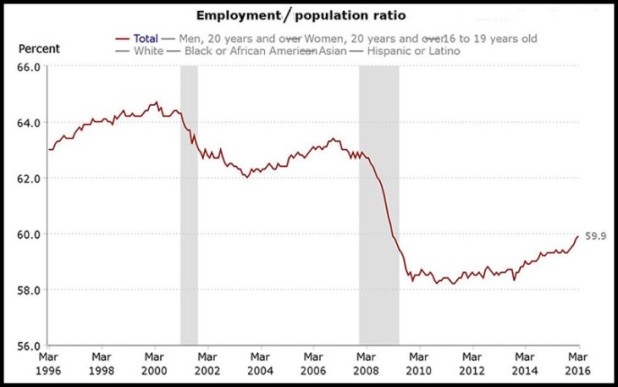The New Observer
April 4, 2016
Some 25 million—or 17 percent—of the total number of employed people in the US were born outside that country as of march 2016, official Bureau of Labor Statistics (BLS) have revealed.
The BLS statistics do not distinguish between those who are in the US legally or illegally, and therefore demonstrate the vast number of jobs being denied Americans because of immigration per se.
According to the BLS figures, released last Friday, of the 150,738,000 employed persons in America, exactly 25,741,000 were born outside of the US.
This figure is a record high, and reflects an increase of 246,000 over the previous high recorded in November 2015.
“The foreign born are those residing in the United States who were not US citizens at birth. That is, they were born outside the United States or one of its outlying areas such as Puerto Rico or Guam, to parents neither of whom was a US citizen,” reads the BLS definition.
“The native born are persons who were born in the United States or one of its outlying areas such as Puerto Rico or Guam or who were born abroad of at least one parent who was a US citizen.”
Since Barack Obama’s inauguration, the working-age, foreign born population has increased by 6.1 million and the working-age, native-born population has increased by nearly 12 million.
In that same period of time foreign-born people gained 4.4 million jobs while native-born people gained 5.9 million jobs.
At the same time, the national unemployment rate (5 percent) and the total number of unemployed (eight million) remained unchanged.
Other statistics included the following:
– Among the major worker groups, the unemployment rates for adult men (4.5 percent), adult women (4.6 percent), teenagers (15.9 percent), Whites (4.3 percent), Blacks (9.0 percent), Asians (4.0 percent), and Hispanics (5.6 percent) showed little or no change in March.
– The number of long-term unemployed (those jobless for 27 weeks or more) was unchanged at 2.2 million. They account for 27.6 percent of the unemployed.
– The number of persons employed part time for economic reasons (also referred to as involuntary part-time workers) was unchanged in March at 6.1 million.
These individuals are defined as those “who would have preferred full-time employment, were working part-time because their hours had been cut back, or because they were unable to find a full-time job.”
– At least 1.7 million persons were “marginally attached to the labor force,” down by 335,000 from a year earlier.
These individuals are defined as “not in the labor force, wanted and were available for work, and had looked for a job sometime in the prior 12 months. They were not counted as unemployed because they had not searched for work in the 4 weeks preceding the survey.”
– Among the marginally attached, there were 585,000 “discouraged workers” in March, down by 153,000 from a year earlier.
Discouraged workers are defined as “persons not currently looking for work because they believe no jobs are available for them.”

